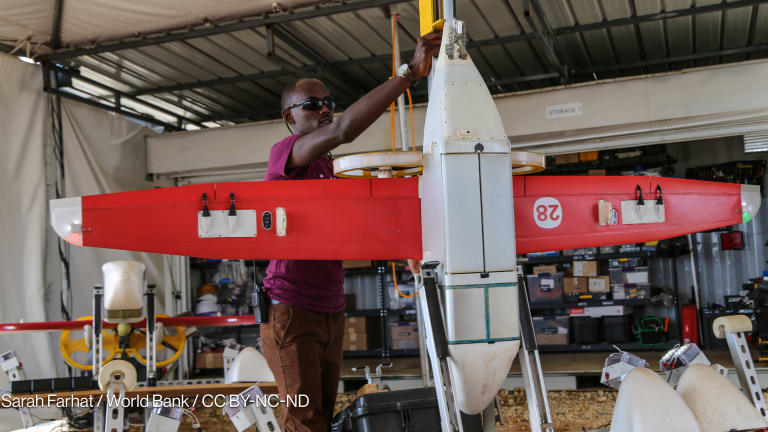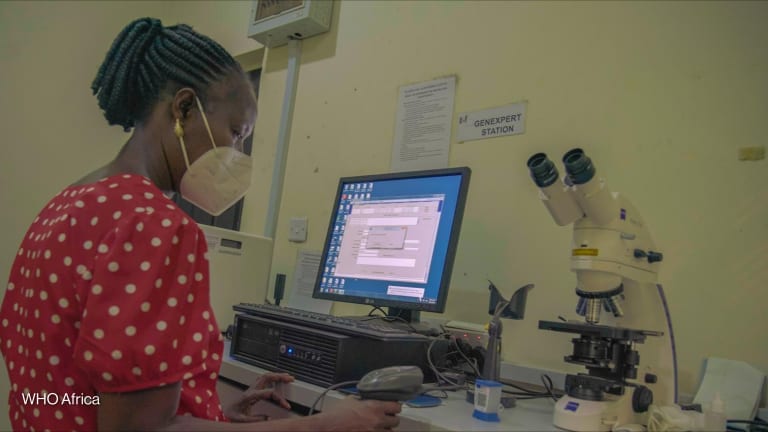Over the past few months, I have been looking at lots of development finance data as visualized by new and very cool mapping, charting, and data mashup tools. The combination of easily accessible data on development finance and open data from the World Bank’s World Development Indicators allows computer software geniuses (and my own students who have taken a few GIS courses) to visualize data in useful and interesting ways.
For example, for the past few weeks, I have been following the World Bank’s “Apps for Development” competition. My favorite is a web and mobile application called Development Loop that was built by my (smarter and more creative) colleagues at AidData. But I also really like Economic Data Finder, which integrates your web browsing of news stories with access to charts and graphs of the concepts or indicators mentioned in the stories. This app will be especially useful for professors who want to be timely, but are still putting together their lectures and slide presentations 45 minutes before class starts.
My favorite data visualization for this week is a work in progress brought to you by Ashley Ingram, a William & Mary student who is double-majoring in economics and sociology. Ashley and I had been talking about whether U.S. foreign aid allocations shifted after the Cold War to target poorer countries rather than being driven so strongly by geo-political concerns. Naturally, I started talking about academic papers that showed this, that, or the other using cross-national time series analysis. Ashley did something much cooler. She used AidData to map all the foreign aid given by the U.S. government for each year since 1985 into a series of cartograms where the dollar value of aid substitutes for the actual geographic area of land. Then she embedded these maps so you can see change in aid flows over time. If that wasn’t cool enough, she also added data on average income by country so that light colored countries are poorest and dark colored countries are relatively rich. If U.S. aid flows shift dramatically to poorer countries after the Cold War, our maps should be getting lighter after 1990. And, they are… sort of… as you’ll see in the above video.
Here are the 8 things that jump out at me when I look at this map. My colleagues who looked at this saw very different things and I’d be really interested to hear what other people think they see, and what it means.
1. The continent of Africa, which contains many of the world’s poorest countries, does get larger over time, especially late in the time series.
2. Some of the increased aid to Africa is flowing to the richest countries in Africa (like South Africa right after the end of apartheid in the early ’90s and a second surge of dollars for HIV/AIDS programs from 2006 to ‘08).
3. The map does get lighter over time, but there are noticible blips of increasing darkness, like the large infusions of aid to relatively rich countries of Eastern Europe and the former Soviet Union in the 1990s.
4. Some really obvious things are constant and do not change; Egypt and Israel remain massive splotches on the map every year as a result of the Camp David settlement.
5. Post-invasion Iraq and Afghanistan receive massive and sudden increases in aid that literally distort the map. I guess Paul Wolfowitz was wrong about those Iraqi oil revenues paying for reconstruction.
6. Aid to Pakistan is very volatile. Lots of aid until 1990. Very little until 2001. Lots of aid after 2001. This pattern appears to be driven by two things: pursuit of nuclear weapons, which the U.S. deemed unacceptable in 1990; and the U.S. invasion of Afghanistan and the war on terror, which apparently makes nuclear weapons in Pakistan no longer unacceptable.
7. U.S. aid to Latin America declines in most countries, especially the middle-income countries, but Peru and Colombia defy gravity.
8. Relative to other regions, East Asia seems remarkably stable and gets very little aid over time. The most interesting changes occur when the U.S. attempts to buy North Korean compliance with various nuclear deals (see the polka-dotted country appear suddenly in 1999 and 2002).
Very rarely do such data visualizations answer important questions definitively, and this one doesn’t either. But I have found repeatedly that seeing data in a different way does raise good questions and causes people to think creatively. The exact same data in a flat table, a line graph, a regression table, and a cartogram look very different and suggest different things. I did not expect some of the things listed above. Some of them raise interesting questions and/or suggest hypotheses to be explored. Some of them are downright misleading. A few observations to get our conversation started…
A. While Pakistan, Afghanistan, and Peru contribute to the “lightening” of the map, presumably the aid is not being targeted for these countries simply because they are in the bottom two quartiles in terms of poverty. Correlation (even in multi-colored maps) does not equal causation.
B. Poverty is not uniformly distributed within countries, so even if “less poor” countries are receiving a lot of aid, it does not mean the aid is not going to poor people (though it probably is not). In order to test this hypothesis (or visualize it), we would need sub-national data like this.
C. What the heck is that “rich” dark blue blob on the map under Jordan? I know that Yemen gets a lot of foreign aid, but I keep hearing on CNN that Yemen is very poor. It is not Kuwait, Saudi Arabia, or Oman (I checked and the United States gives little or no aid to those countries for most years).
Bottom line: The thing that you really need to make useful visualizations is better data. Right now the gee-whiz tech tools are better than the underlying data (at least the data that is publicly available). This is especially true at the sub-national level.
I apologize if I sound like a broken record, but I am really pleased about the adoption of the IATI standard and I am looking forward to the day when donor governments, recipient governments, and aid implementing organizations make more of their data publicly accessible.
Read more of Full Disclosure: The aid transparency blog, written by aid workers for aid workers.








